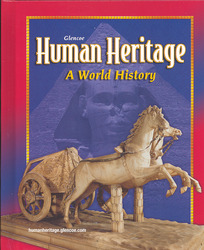
Human Heritage: A World HistoryChapter 31: Expansion Into the AmericasExpansion Into the AmericasFrom the early 1500s to the 1700s, several western European countries set out to colonize the Americas. They wanted to build permanent settlements on, gain riches from, and spread Christianity to the lands they discovered on their earlier explorations. Chapter 31 is about the expansion of western Europeans into the Americas. Section 1 deals with the land claims and permanent settlements of Portugal in Brazil. Section 2 describes the growth and decline of the empire that Spain established in the Americas, focusing on the Spanish conquest of Native American empires in Mexico and Peru. The section explains the role of the Roman Catholic Church in Spanish colonization. Section 3 focuses on the growth of an English Empire in the Americas from the early English colonies of Roanoke, Jamestown, and Plymouth to the 13 colonies that existed along the Atlantic coast of America by 1733. The section describes how the early colonies were organized and discusses their first governments. A chart lists the Native American groups the English colonists encountered in North America and describes their ways of life. Section 4 covers the colonies established by the Dutch in the Americas, focusing on New Amsterdam, which was later renamed New York by the English. Section 5 covers the French colonies that grew up around the Great Lakes and along the Mississippi River as well as in the West Indies and India. A map of the Americas shows the colonies established by western Europeans by the mid-1700s. Section 6 explains how the empires that developed in the Americas influenced and affected Europeans. |  |















